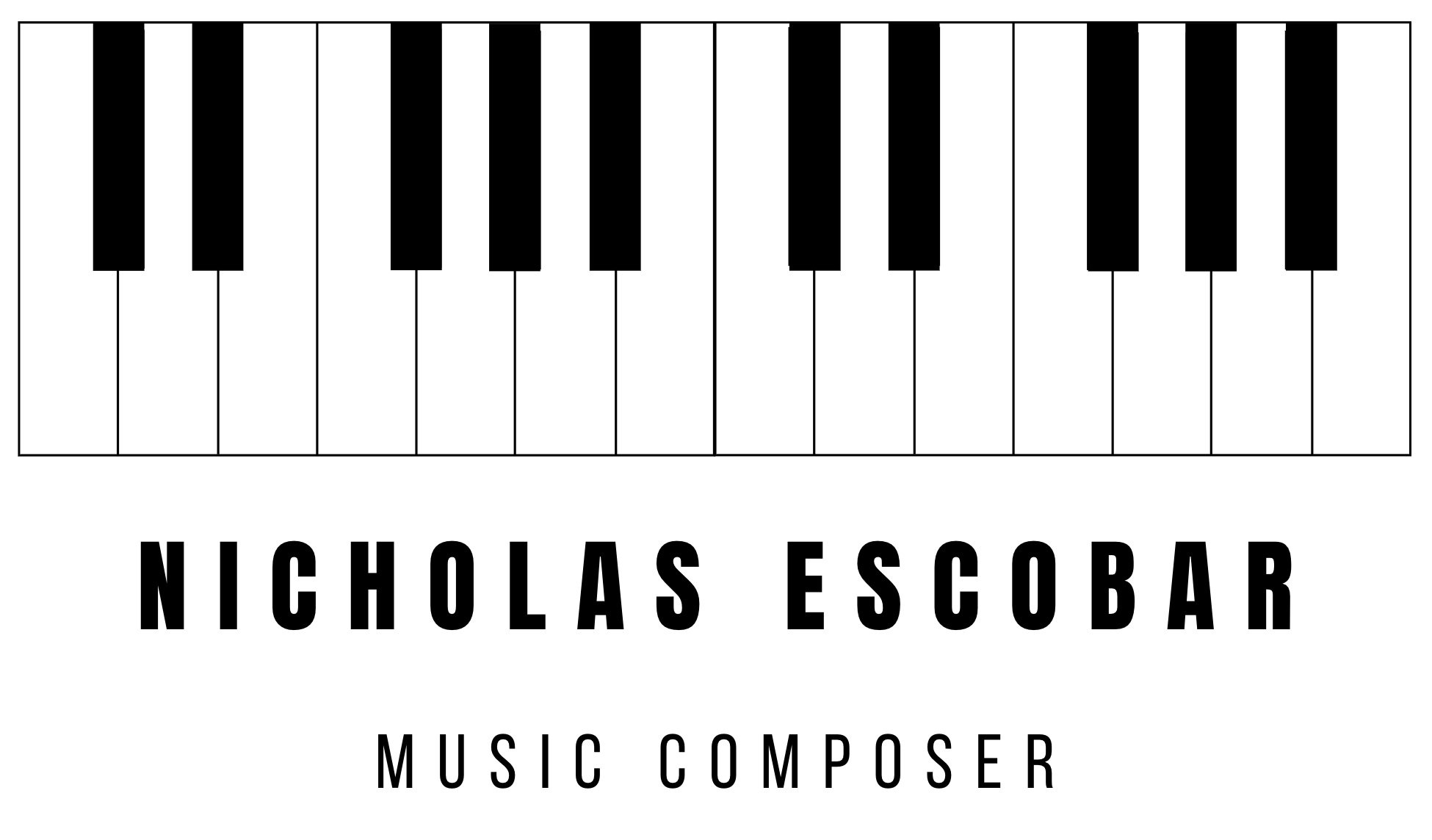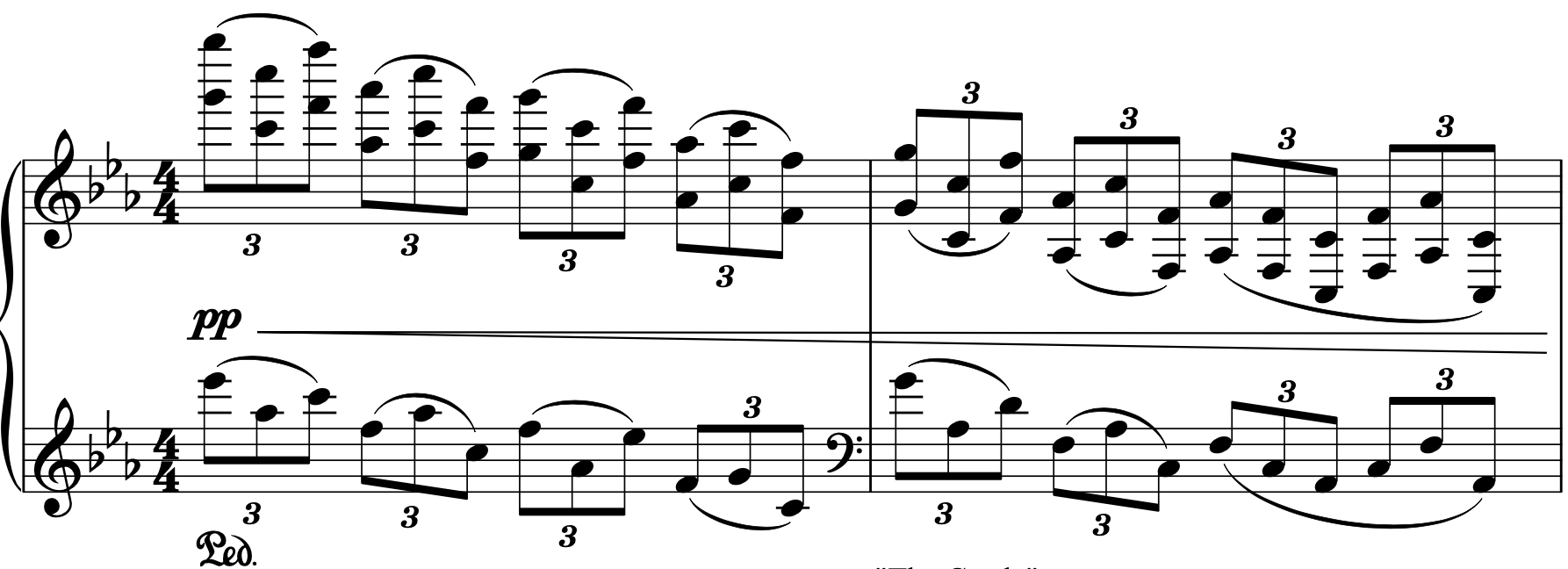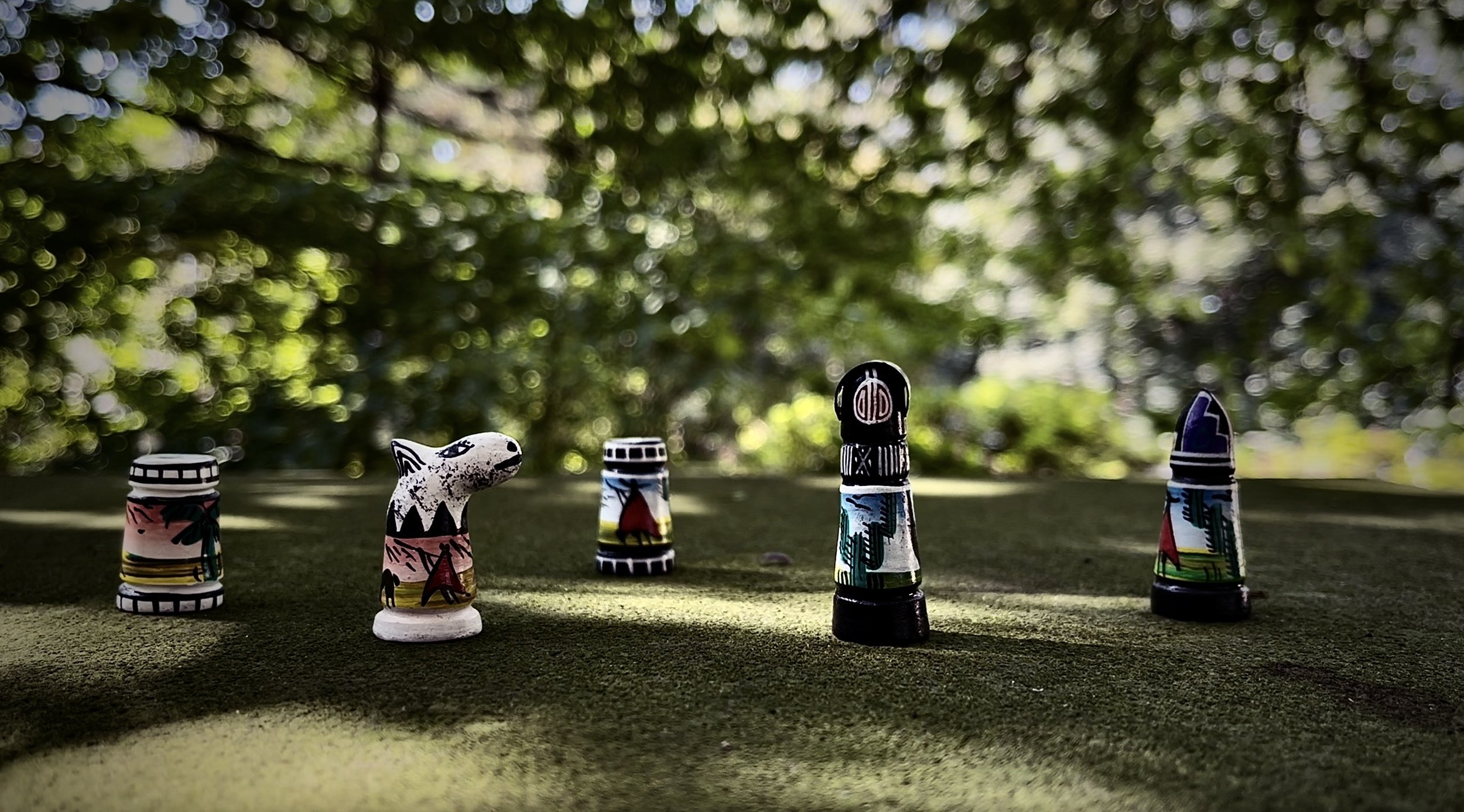My Composing Process: clay chess pieces litter my mind (2022)
Dear Readers,
The title of this composition comes from a short poem that I wrote in a notebook recently. While grocery shopping in Giant, I saw a tiny reporter’s notebook in the pen/pencil section. I bought it, thinking that it could be a good place to write short original work. Turns out it has already been incredibly useful. Each night, I write one or two short poems. I have also been writing my dreams in the notebook as well (though if I may just say, most of the time the dream text is illegible because I write it when I’m half asleep.)
The title for this composition comes from a late night poem that I wrote a week or so ago.
One night, I wrote down the line “clay chess pieces / litter my mind”. I was thinking about a small clay chess set that my parents bought in Peru. I have it in my room, proudly displayed. The chess pieces are beautiful. Handmade and hand painted.
That is where the title came from.
Composing With The Piano
If you have been following my recent string of blog entires, you might notice that while piano is sometimes present in my recent work, it isn’t the main instrument. This is partly because I really enjoy experimenting with different instrument combinations. And, jazz organs and synths and harpsichords are piano-like in many ways. That being said, I wanted to return back to my roots: solo piano composing.
I composed my first piece on the piano, titled “Leaving”. Back in 2008 for my elementary school graduation. I hold the instrument close to my heart. I started piano lessons when I was seven years old. We still have my first piano (a small electric Yamaha) in the basement. The piano that I composed “Leaving” (an electric upright) is still in our living room.
Last Friday, I opened up a Logic X project, loaded up my Abbey Road Studios CFX Yamaha Concert Grand virtual instrument and started to improvise. “clay chess pieces litter my mind” is one of those compositions where I can’t actually pinpoint the moment that I composed it. It just sort of…existed.
If you have heard my Petals album then you know the style of piano music I like to compose: melodic lines with moving ostinatos in the left hand. Like with “Petals”, I sought to connect the right and left hands so that it feels like the lines are interweaving and dancing with one another. This happens constantly in “clay chess pieces litter my mind”, for example:
Take a look at measures 5 and 6. The quarter-note melody in the right hand hits on the down beat. The accompaniment in the left hand is made up of 16th notes (16 notes per measure). I purposefully cut out the downbeat note 6 out of 8 times in these two measures. The result? The right hand notes seem to weave together with the accompaniment to they become one melodic line. The accompaniment essentially becomes a part of the melody.
Now, I didn’t think this through beforehand. It came to me naturally as I was improvising and sketching out the piece on the fly. It naturally felt right to play the piece in this way.
The Music Theory Perspective
This piece is largely built upon seventh chords. The first iteration of the melody in measure four is based around an F minor seventh chord (F-Ab-C-Eb), but with the 9th in the right hand (a G natural). The 9th adds a crunchy dissonance to an already exciting chord. Measure 5 moves to an Eb major seventh chord (Eb-G-Bb-D) but with the G in the bass. The melody continues with the same structure: four quarter notes that descend down and then back up. Measure 6 introduces Ab major with a raised fourth (D natural). I love adding raised fourths to chords. It’s like a dash of spice in a dish. It wakes you up. From there we have a downward motion from Eb major 7th (with the G in the bass) down a half-step to Gb to create a G flat augmented 6th chord (quite crunchy). The downward motion continues, arriving at F natural in the bass to create an F minor 6th chord. Keeping the F in the bass, we finally create a Bb 7 chord chord that leads back to Eb major.
The second melodic passage is heralded in measure 19 by the introduction of the Eb 7th chord (Eb - G - Bb.- Db). This section travels from Ab major to Bb 7th (with F in the bass) to (and this is the kicker), Db minor. A beautiful chord, acting as the minor fourth to Ab major and the minor seventh to Eb major.
The Unique Composition Process
I went about composing this piece in a different way. It was built upon improvisation and split second thoughts and then I poured over the notes and replicated those thoughts in music notation. The opening sequence is a good example of this process.
The opening was entirely improvised. I wanted something to open the piece and lead seamlessly into the first iteration of the melody. I settled on F minor as the starting point, and improvised a descending line that hit a number of other notes in the Fm scale (Eb, D, G for example). The entire line ended with a large C major chord (the fifth of F minor).
My process for composing this piece involved first improvising, the sketching out the course of the piece in my head, and then performing it fully into the computer. From there, I notated out the performance (in Sibelius) note for note. During that process, I made small edits and adjustments. These are two of my early attempts at the opening:
For the final notation of the opening, I referenced these previous performances of mine in Logic and took elements from them to place in the final version. This involved, for example, placing the G in the left hand in the fourth triplet of the first measure. Basically, I crafted and notated the best version of the piece and a lot of consideration was put into it. Then, I performed the entire piece again, referencing the final notation. Even during the final performance, I made some subtle changes to the piece, so I returned back to the Sibelius file and made the necessary adjustments.
This process rung true for the rest of the piece as well. With each performance in Logic, I was honing the piece further, discovering the true essence of it. Each performance also brought subtle changes. You can hear two early versions of the main theme here. The first sketch is actually the first recording into my computer that I did of the piece. So I was still formulating the piece as a whole. You can hear the differences between these versions and the final/
And here you can hear the creation of the second melody. I hadn’t recorded this prior. I had attempted the Eb 7 to Ab major movement a bit before but this is when the melody itself came into view.
This composing process worked incredibly well. I find composing in Sibelius a bit difficult, especially these days, because it lacks the immediacy and improvisation that I work so well with. So, performing into Logic and then notating out note by note into Sibelius is the perfect process for me.
I also find working with the physical notes very rewarding. You can get down to the nitty gritty, look at the minute details. You can put in all the dynamics, tempo markings, articulations. I feel closer to the music this way. It also allows for other people to play your music too. There is a permanence to it.
The Video and Soundscape Sounds
To keep with the theme of my “little pieces of improvised sound series”, I added in soundscape recordings of nature to the background to support the piano. They are from:
Kent Island, Maryland, USA
Poland, Maine, USA
Western Avenue, Washington D.C., USA
Pamlico Sound, North Carolina, US
I spread them out in the stereo image, so it feels like they are enveloping the viewer. I also added a bit of reverb to blend them together and held back a bit on the gain so that they didn’t overpower the main instrument.
For the video, I filmed five of the chess pieces from the Peruvian set in my backyard. I placed them in a staggered line and shot a four-minute + video. It’s cool because at the beginning you can actually see a pill bug run across the frame. I like that the wind picks up towards the very end when the piece is slowing down. For the album cover and main image of the piece, I edited the RGB color levels a lot to darken and take away some of the color. It made the image quite dynamic and dramatic.
Conclusions
Really loved the process of composing this piece. This piece was especially important because it got me working in Sibelius again which I haven’t done with earnest in quite a while. I want to start working on concert pieces and notating out my compositions more. This piece helped me a long with that process.
If you have any questions about my composing process feel free to email me at nicholasescobarcomposer@gmail.com.
Your’s musically,
Nicholas Escobar





